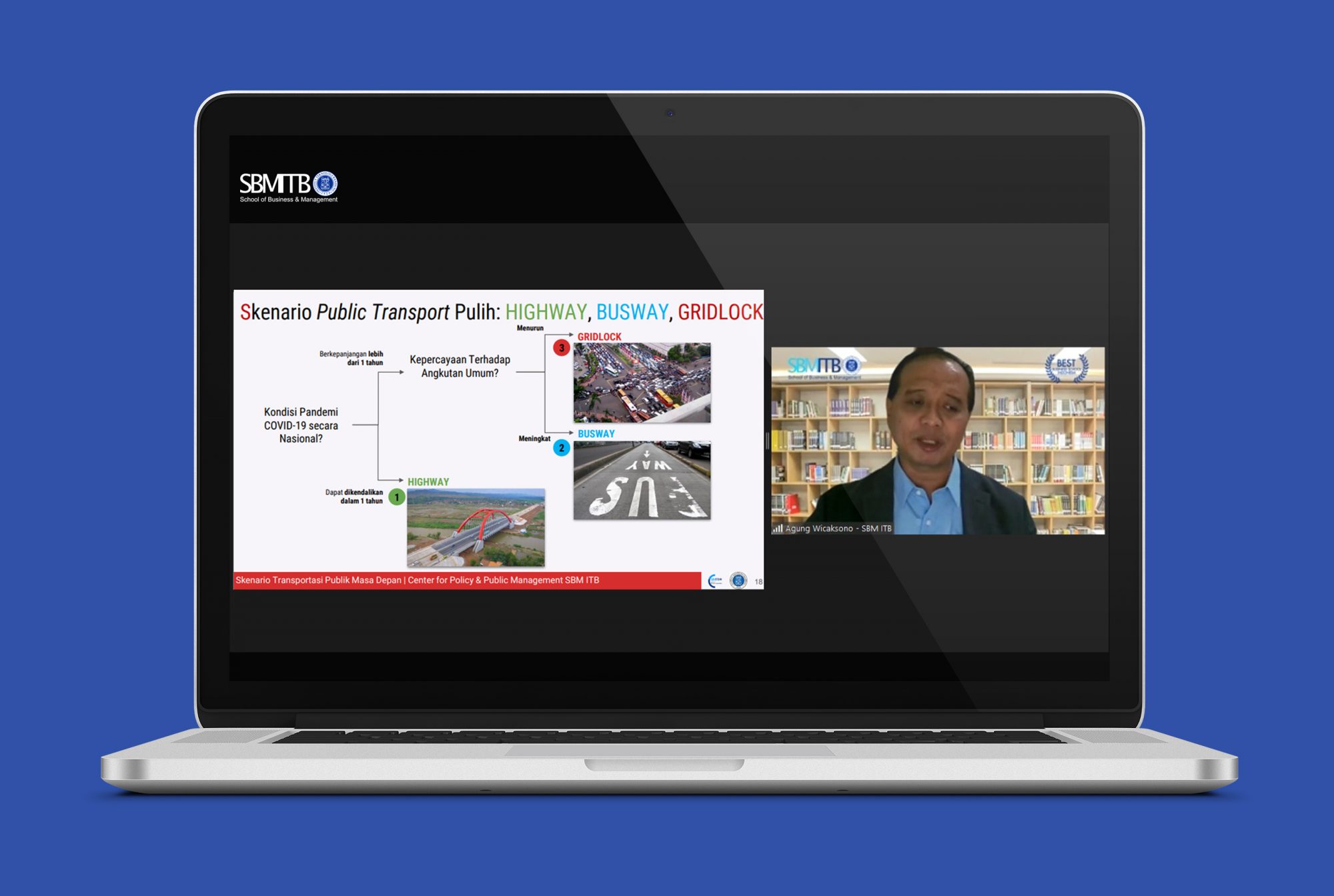Written by Student Reporter (Deo Fernando, Entrepreneurship 2021)
Towards one-year of Jokowi – Ma’ruf Amin cabinet, SBM ITB provided the formulation of policy recommendations in energy and transportation sectors. “Scenario planning is the most appropriate method in uncertainties, for instance, in this pandemic caused by COVID-19,” said Dean Prof Utomo Sarjono Putro in the webinar entitled “Quo vadis one year of Indonesia Maju cabinet: What is the future of energy and transportation scenarios?”
Utomo Sarjono Putro as a professor in decision and negotiation said that the government could use scenario planning to formulate the future full with uncertainties and to plan options and strategic implications needed to undertake. Utomo added, one of the SBM ITB missions was to develop and disseminate knowledge for business, government, and society. “In particularly within this pandemic where upstream oil and gas as well as public transportation were greatly affected,” said the Dean (15/10/2020).
The Post-Normal, tomorrow’s scenario for public transportation
As the webinar continued to discuss transportation sector, the researcher and lecturer of CPPM SBM ITB, Agung Wicaksono, revealed another three scenarios. “There were Gridlock, Busway, and Highway scenario.” The former President Director of TransJakarta explained, “Gridlock is the possibility of the situation when COVID-19 pandemic prolonged more than 1 year and public trust in using public transportation continued to decline out of fear of getting infected in public transport. Gridlock or congestion then happens as the result of excessive use of private vehicles,” told Agung while underlining the stagnation of public transportation industry in this scenario.
According to Agung, “Busway scenario might also occur although pandemic condition continued for more than a year, but here we can earn public trust in the use of public transportation. Public transportation business could recover although needs more solid consolidation. Both operator and regulator have significant roles in gaining people’s trust of using public transports.”
Agung moved to talk about optimistic scenario in which he called the Highway scenario. “This scenario portrays the pandemic take off in less than a year. Although less likely to happen since we still have yet no solution in this 10-month pandemic, but the hope remains until the beginning of 2021,” he said.
From three scenarios named the Post-Normal, as Agung told the audiences, there were two important keys highlighted. According to him, there were the ability of the government to manage the pandemic and the operator readiness to earn people trust regarding safe public transport. “If that could be done, IDE (Integration-Digitalization-Electrification) as a future trend in public transportation would happen. And the Buy the service (BTS) scheme where the government through BUMD/BUMN/BLU paid operators following the Minimum Service Standard (SPM) can be implemented,” said the former Director for MRT Jakarta.
As a response to the scenario, Secretary-General of DPP Organda, Ateng Aryono argued that public expectations for public transportation were always high, even amid a pandemic. Strong collaboration between government and operators was important to mitigate the pandemic risk. “All stakeholders in the transportation business are hoping for the government to hear operators’ feedback to always improve the service,” he said.
The webinar was hosted by Yudo Anggoro, Ph.D., lecturer and Director CPPM SBM ITB. Yudo concluded, “Both scenarios VisiPetro for upstream oil & gas energy and Post-Normal for public transportation are our effort to take an evidence-based-policy approach in formulating the policy.”




